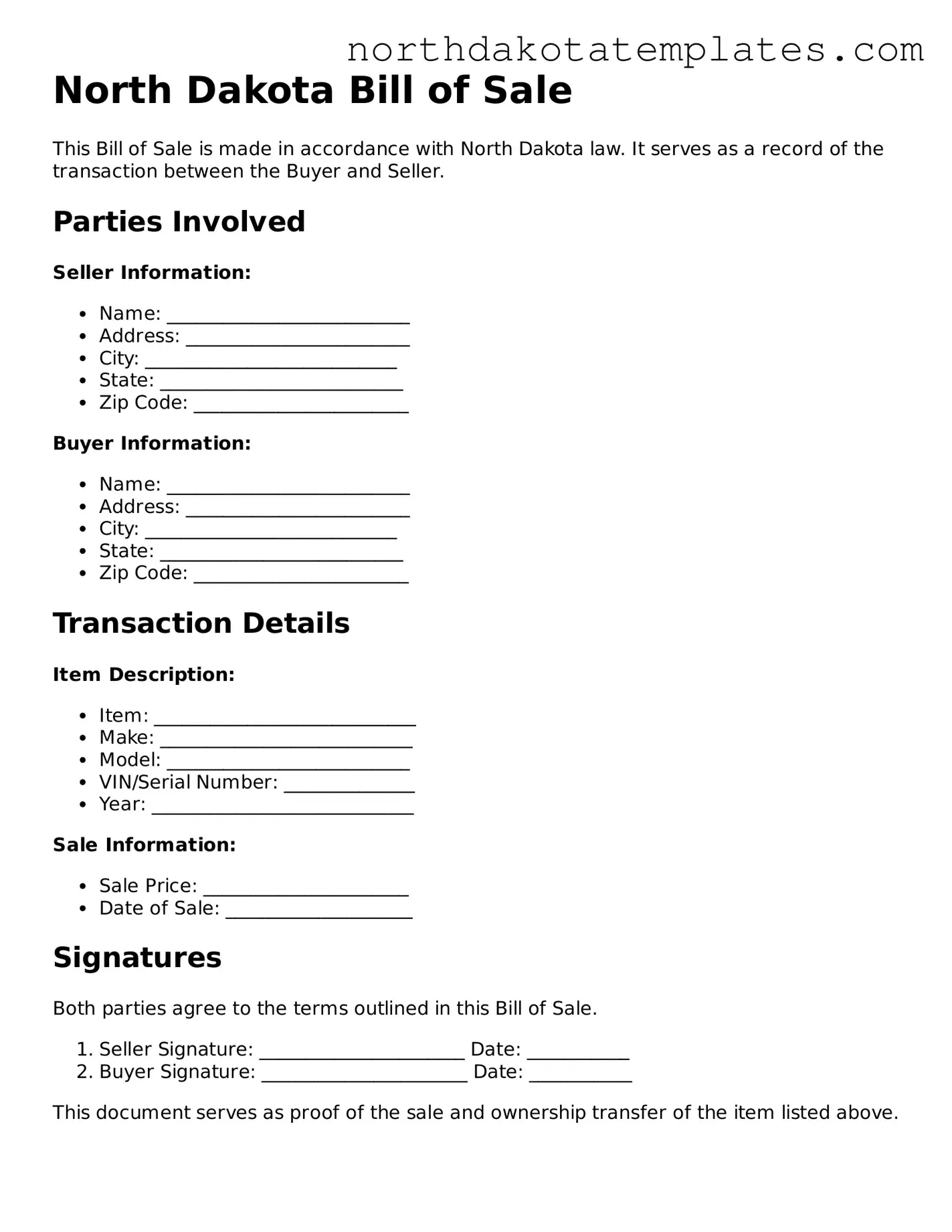What is a Bill of Sale in North Dakota?
A Bill of Sale is a legal document that records the transfer of ownership of personal property from one person to another. In North Dakota, this form serves as proof of the transaction and outlines the details of the sale, including the buyer, seller, item description, and sale price. It is essential for both parties to keep a copy for their records.
Is a Bill of Sale required in North Dakota?
While a Bill of Sale is not legally required for every transaction in North Dakota, it is highly recommended, especially for high-value items like vehicles or boats. Having a Bill of Sale protects both the buyer and seller by providing a clear record of the transaction. This document can help resolve disputes and verify ownership in the future.
What information should be included in a North Dakota Bill of Sale?
A complete Bill of Sale should include the following information: the names and addresses of both the buyer and seller, a detailed description of the item being sold (including make, model, and VIN for vehicles), the sale price, the date of the transaction, and any warranties or conditions of the sale. Both parties should sign and date the document to validate the transaction.
Do I need to notarize a Bill of Sale in North Dakota?
Notarization is not required for a Bill of Sale in North Dakota, but it is a good practice. Having the document notarized adds an extra layer of authenticity and can help prevent disputes regarding the legitimacy of the signatures. If you plan to register the item with a state agency, check their requirements, as some may require a notarized document.
Can I create my own Bill of Sale form?
Yes, you can create your own Bill of Sale form in North Dakota. However, it is important to ensure that it includes all necessary information and complies with state laws. Many templates are available online, which can serve as a helpful starting point. Ensure that the form is clear and unambiguous to avoid any misunderstandings between parties.
What should I do if I lose my Bill of Sale?
If you lose your Bill of Sale, you can create a new one, but both parties must agree to the new document. It is advisable to keep copies of important documents in a safe place. If the original transaction was significant, consider contacting the other party to discuss the situation and reach a mutual agreement on how to proceed.
